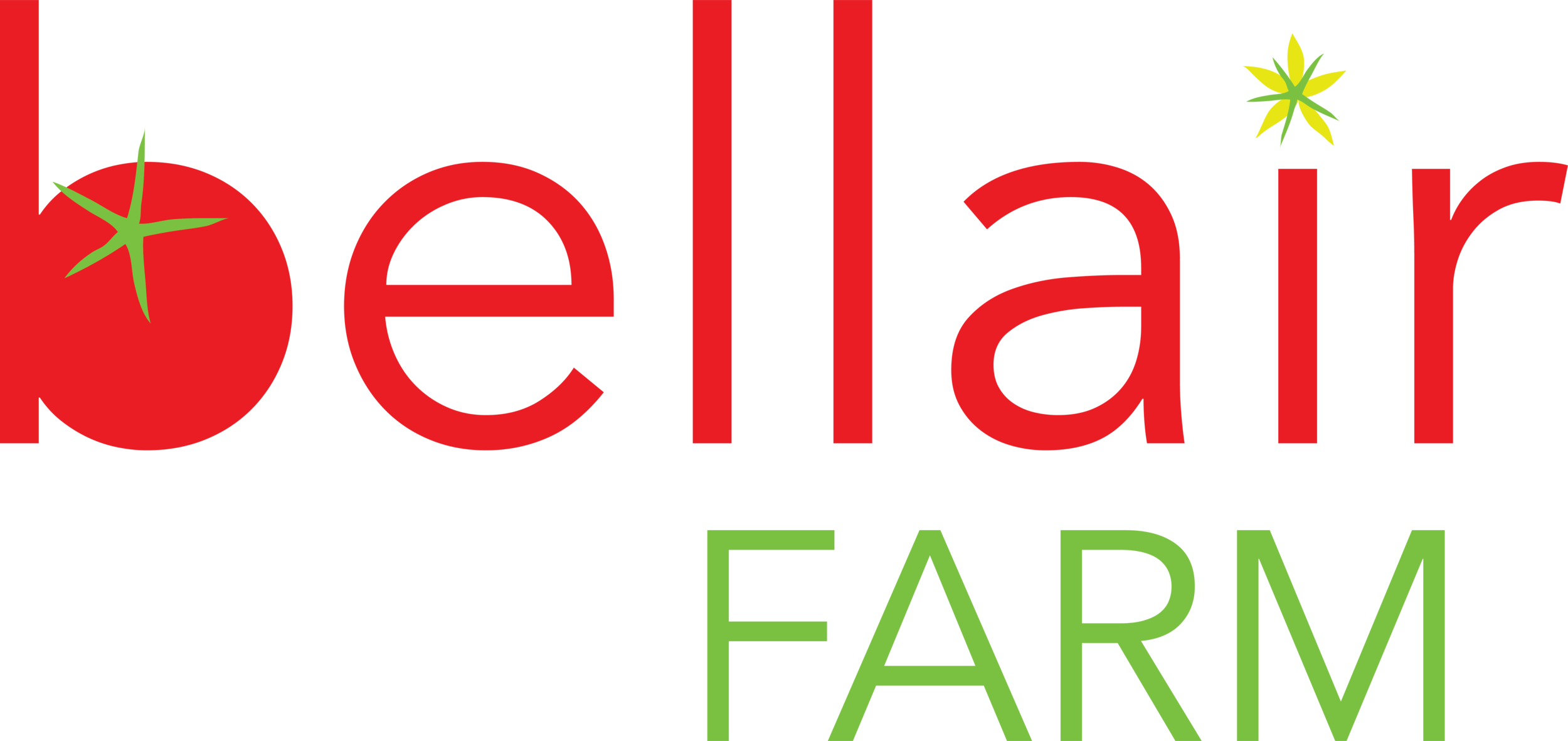Culinary Herb Guide
Clockwise from top left: Fresh Dill, Parsley, and Basil from the Bellair Pick-Your-Own
We grow a selection of culinary herbs in the pick-your-own at Bellair, but if you love having an abundance of fresh herbs for cooking, consider growing your own. Many of these can be grown in pots if you don’t have a garden plot, as long as you have a good source of sunlight. If you want to do a deep dive into growing culinary herbs here in central Virginia, check out this excellent herb growing guide from Piedmont Master Gardeners.
There are so many different varieties of culinary herbs. When growing your own, it’s good to know the difference between annuals and perennial herbs. Annuals complete their entire life cycle in a single growing season. Some annual herbs very easily ‘self-seed’ and you may notice the plant coming back the next year. Otherwise, you will need to re-seed them each season. Perennial plants appear to die back during the winter, but are actually just dormant. These plants will regrow season after season, except for after very cold winters. If you notice your perennials not making it to spring, consider planting them along a south-facing wall for shelter.
Below are some annual and perennial culinary herbs that we have in stock this year.
Basil - annual; this year we have classic Italian, Purple Italian and Citrus Basil - use them all fresh in salads and pestos and tomato sauces. The citrus kind can be used to flavor lemonade and teas. Can be dried, but it loses much of it’s potency; We also have sweet Thai Basil, great in Asian soups.
Dill - annual; likes the cooler weather in Spring, use fresh and dry some for later, though the dried will not have as strong a flavor; you can also harvest the seed for cooking and pickling. This herb is best direct-seeded (not transplanted).
Chives - perennial; green herb that looks like a small green onion; the leaves and the pretty purple/pink flowers are both edible. You can infuse just the purple flowers in vinegar/apple cider vinegar for a pretty pink, onion-flavored salad dressing or soup ingredient
Cilantro (Coriander) - annual, but tends to self-seed; will bolt when the weather gets really warm, so best to harvest frequently; once it does bolt, you can save the seeds to use as Coriander in the kitchen. This herb is best direct-seeded (not transplanted).
Lavender - perennial; the “English” variety is more compact and has smaller leaves and flowers than the tall, slender “French” variety, but both are excellent for cut flowers or potpourri
Marjoram - perennial; similar to oregano, but milder/sweeter
Mints - perennial; watch out, because it will take over if you let them! These are excellent candidates for container gardening; we have classic Peppermint and the cooler, sweeter Spearmint. Lemon balm is another member of the mint family and is similar in growth habit and uses.
Oregano - perennial; we have two varieties: “Greek Mountain” with a more intense, peppery flavor and “Italian,” the classic culinary variety; this a classic ‘roasting’ herb and Nat likes to use LOTS of oregano in his Puerto Rican-style pork butt recipe.
Parsley - technically a biennial, but often treated like an annual; use fresh for many dishes; can be dried, but will lose flavor quickly
Rosemary - perennial; classic roasting herb
Sage - perennial; we have several types: Gardener’s Friend (a classic culinary variety), Bergarten (wide, rounded leaves), and Tricolor (variegated) - all of which can be used in cooking; Pineapple sage is a unique sage variety - the leaves are different and it has beautiful red blooms that make it an attractive addition to the garden whether you harvest the leaves or not! The leaves have a mild ‘pineapple’ scent and it can be used to flavor beverages or salads
Stevia - perennial, but won’t survive Virginia winters, so grow it as an annual. This herb is potently sweet and grows quickly. It’s easy to dry as well.
Tarragon - perennial; narrow green leaves have an anise aroma. Flavors salads, salad dressings, soups, egg dishes, sauces and meat dishes.
Thyme - perennial; we have the common variety and Lemon Thyme; a classic roasting herb (I love to use lemon thyme and lemon slices for my go-to roast chicken recipe); can be used fresh, but it also dries very easily and keeps it’s flavor if stored properly
Herb Pot Combinations Growing herbs in containers is a great option if you don’t have a home garden. It’s a great option even if you do have a garden, as it can help prevent certain prolific plants (looking at you mint!) from taking over. Growing herbs together in pots can help save space and they look really nice. Here are some things to consider when growing herbs together:
Moisture needs - avoid putting moisture loving herbs with companions that need dry soil. Mediterranean herbs like sage, rosemary, oregano, and thyme like it more dry. Parsley, cilantro, dill, basil need more consistent moisture.
Growth patterns - think about combining taller, bushier plants with a creeping one; for example, bushy rosemary and spreading oregano, or bushy sage and creeping thyme
Keep perennials and annuals separate, if you want. That way, you can re-seed/reuse your ‘annual’ pot year after year and make changes

